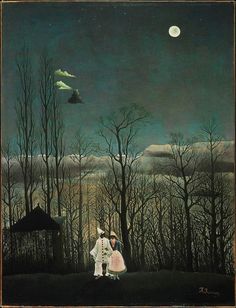DREAM DICTIONARY
Made Of Dreams
Search
The Sleeper's Night Journey












The Sleeper's Journey
Quite sleep is itself divided into three sub-stages. Stage 1 is a transitional state between drowsy wakefulness and light sleep,characterized by slow drifting eye movements and vivid, brief dreamlets called hypnagogic (from Greek, meaning "leading into sleep")imagery. Normally, you quickly pass through Stage 1 into stage 2, which is bona fide sleep and is characterized by unique brain wave patterns called "sleep spindles" and "K-complexes." Mental activity at this point is sparse,mundane, and thought like.
Typically after twenty to thirty minutes, you sink deeper into "delta sleep,". "So named after the regular large, slow brain waves that characterize this stage of quite sleep. Interestingly, this state of sleep and dreamless sleep is highly regarded in some Eastern Mystical traditions as the state in which we establish contact with our innermost consciousness. According to Swami Rama, "It is when the inner world can be suffused with the full light of the highest universal consciousness. The ego state of waking consciousness drops away. Moreover, the personal aspects of the unknown mind are temporarily abandoned. The memories, the problems, the troubled dream images are left behind. All the limitations of the personal un consciousness are drowned out in the full light of the highest consciousness."
After gradually entering the deepest stage of delta sleep and lingering there for thirty or forty minutes , you come back up to Stage 2. Approximately seventy to ninety minutes after sleep onset, you enter REM sleep for the first time of the night. After five to ten minutes of REM and possibly following a brief awakening in which you would likely remember a dream, you sink back into Stage 2 and possibly delta, coming up again for another REM period approximately every ninety minutes, and so on through the night.
When learning and practicing lucid dreaming, you should keep in mind two elaborations an this cycle: (1)the length of the REM periods increase as the night proceeds and (2) the intervals between REM periods decrease with time of night, from ninety minutes at the beginning of the night to perhaps only twenty to thirty minutes eight hours later. Finally, after five or six periods of dreaming sleep you wake up for perhaps the tenth or the fifteenth time of the night ( we awaken this many times on an average night, but we promptly forget it happened, just as you may forget a conversation with someone who calls you in the middle of the night ).
Having completed your tour of the night's journey through sleep, you may wonder in which stage of sleep lucid dreaming occurs. How we found the answer to this question is a story that deserves retelling.
Reference: Exploring The World Of Lucid Dreaming: Stephen LaBerge Ph,D & Howard Rheingold


